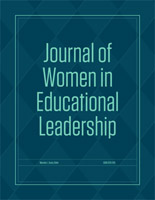Educational Administration, Department of

Journal of Women in Educational Leadership
Date of this Version
7-2007
Document Type
Article
Citation
Journal of Women in Educational Leadership, Vol 5. No. 3--July 2007 ISSN: 1541·6224
Abstract
A constant factor in writing is that the "front end" of a manuscript always receives the most tender loving care. Perhaps this is because it is the first born child of the paper. You spend more time with the "front end" because it comes first and is older than the "back end." The front end is read and reread. The front end may reflect the first burst of passion of your writing. The front end may be given more thought over time. The back end, however, may suffer from the common flaw of the writer who just quits. Once the front end burst of passion expires, the writer may just end the manuscript leaving the reader peering over the edge of a cliff or looking into a chasm. Beware of the weariness factor often manifested by the writer who expended all energy on the front end of a paper and has no energy left to respond to the perennial questions of So What? Who Cares? The implications section of a manuscript is possibly the most important part of a paper because the writer is given the opportunity to teach the reader the meaning of the findings of a study. The writer has the opportunity to interpret the meaning of the text for the reader. The writer has the opportunity to highhght the contributions of the manuscript to the greater knowledge base in a field. Consider as you conclude a manuscript the question, Who Cares? For instance, how does your manuscript contribute to the field of educational administration, to the work of administrators, teachers, faculty, and professors? How does the manuscript inform preparation programs? How is the manuscript important to individuals who are new to careers in educational leadership? How will other researchers benefit from the manuscript? As you develop the implications section of the manuscript, answer each of these questions, as appropriate for your manuscript, for the reader. Consider as you conclude a manuscript the question, So What? For instance, what is original about your manuscript or the findings of your study? What is enduring about your manuscript? What is instructive about your manuscript? How do the findings of your manuscript contribute to the knowledge base in this field? Use these questions as prompts to complete the back end of your manuscript.


Comments
Copyright © 2007 Pro>Active Publications. Used by permission.